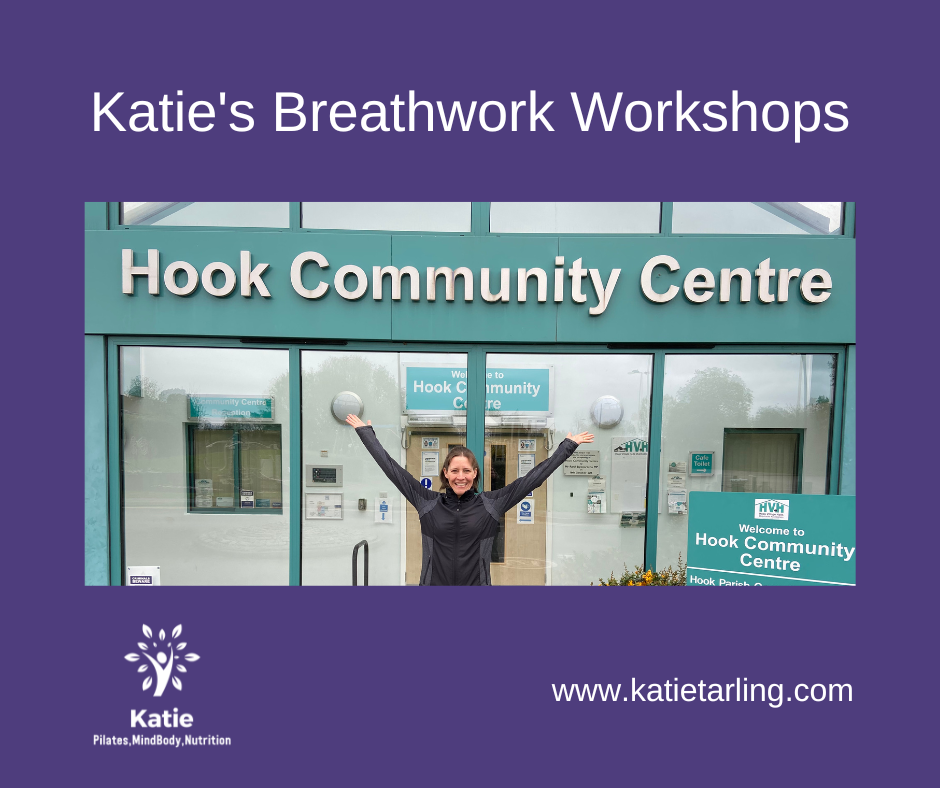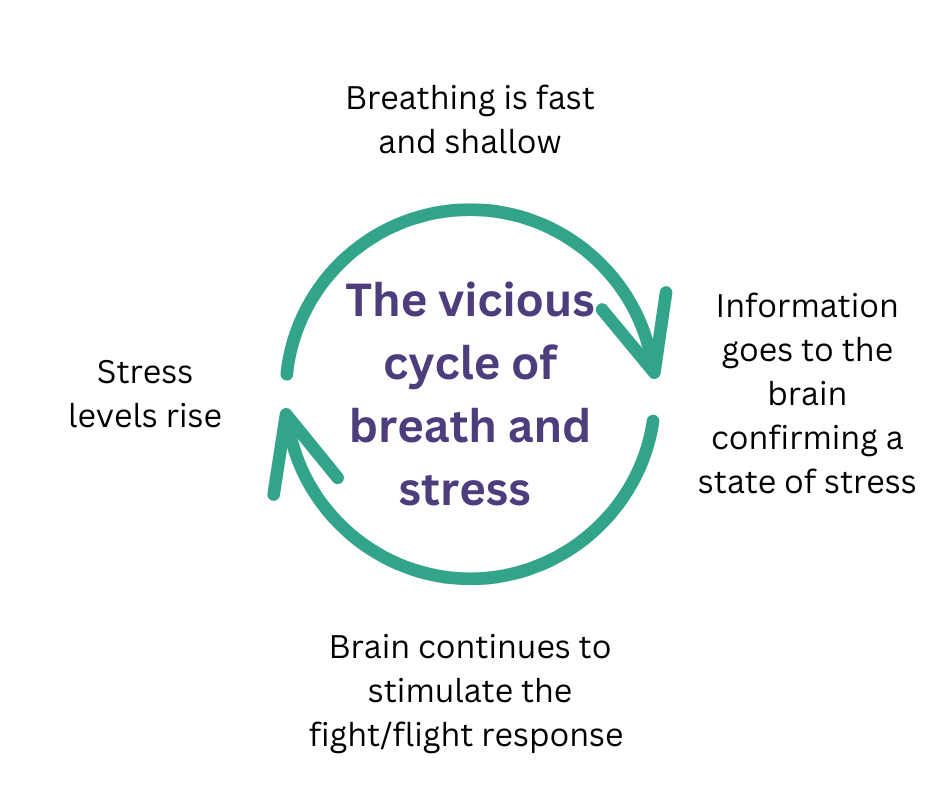Why learn Breathwork?
As a qualified health coach and Breathwork coach, I’ve decided to focus on the topic of breathing, and specifically how Breathwork can impact stress.
A common response, when I mention learning Breathwork is – I’ve been breathing all my life, why do I need to learn how to breathe now? This is an excellent question because breathing is indeed an automatic process, and you must be breathing, or you wouldn't be reading this! When we're focussed elsewhere, or when we're sleeping, our breathing system continues to function automatically. Many of us will be in automatic breathing mode for much of the time. However, this leaves the breathing system at the mercy of our feelings, emotions, and stress levels, which can all have a negative impact on the way we breathe. This impact is often unnoticed as we go through our day, like many of our automatic habits we don't have full awareness of them unless we pay mindful attention to them.
If you feel like you're in a fairly continual low-grade state of stress, anxiety or worry; if you struggle to switch off your thoughts at night-time; or perhaps you wake up feeling anxious before even forming a conscious thought, Breathwork might help.
As I discussed in my body/brain connection blog in January (which you can read
here), the body is constantly communicating with the brain. This communication can, in some cases, create a vicious cycle, for example, we feel a little stressed about a challenging situation we're facing, so the brain initiates the stress response system in the body which, among many other things, alters our breathing, making it faster and shallower. The breathing system then sends information to the brain that we are in fight/flight mode, so the brain continues to maintain the stress response system and the cycle goes round. What comes first, the stress or the shallow fast breathing? I don't believe it matters because either can start this vicious cycle flowing.
Our modern way of life may have had an impact on the mechanics of our breathing. Many of us have adopted more of a seated and flexed posture, perhaps reducing the mobility of the rib cage. There are also many societal pressures e.g. to look a certain way, to have a 'flat' stomach, and to wear tight fitting clothing that restricts the movement of our abdomen and therefore our ability to breathe using the diaphragm. A fact I've just become acutely aware of, as I type this in a seated position with a tight waist band on my jeans!
Our modern lives often pull us in so many directions at once, or involve many small stressors every day, from waking up late and being late for work, to caring for an elderly relative, to worrying about a difficult conversation or email we need to face. These small stressors can build up across the days and weeks, and have an impact on the overall stress levels in the body. As already mentioned above, when we become stressed, we tend to breathe faster and shallower, which starts the vicious cycle of stress and shallow breathing.
Our bodies are not designed to be in a prolonged state of stress, which can contribute to the development of many long-term chronic health conditions. Ideally, we would respond to stressors and then return to a calm state again afterwards, which is where Breathwork can come in and help us nudge the nervous system back towards calm.
Also, when we are in a fight or flight state of chronic low-grade stress. We often find our energy levels depleting because the body is functioning in a high alert state for much of the time. By learning how to use simple calming breathing techniques during the day, you might find you are more able to manage your energy levels and occupy a state of calm for a few more minutes of each day.
There are various other reasons why it is better for us to breathe slower and more deeply.
- Our breathing is much more efficient when we breathe using the diaphragm. This is the main breathing muscle which helps to take air lower into the lungs. It's thought that these lower lobes of the lungs are more connected to our thrive state and may be one of the reasons that diaphragmatic breathing can be so calming.
- We can improve the uptake of oxygen into the blood when we get more air into the lower part of our lungs because these areas are also better served by the circulatory system.
- The body is constantly sending information to the brain about the state of the systems in the body. When we breathe fast and shallow, information gets sent to the brain confirming that we are under threat, keeping us in fight or flight mode. Therefore, by breathing in a manner that mirrors what happens naturally under stress, we create a vicious cycle and continue the cycle of circulating stress hormones. However, when we breathe in a way that is calm, we send those calming signals to the brain instead and shift our nervous system towards rest and digest.
- Breathing fast and shallow also has an impact on our ability to digest food. For optimal digestion the body needs to be in a calm state, often called the rest and digest state. Aeons ago, if being chased by a predator, the body would shut down unnecessary bodily functions and divert energy towards the heart, lungs and muscles while escaping the imminent threat to life. This includes the digestive system. You may have noticed that your digestive system is impacted by high stress events such as going into an uncomfortable social situation, or making an important presentation at work or on stage. We can utilise the conscious side of our breathing system and calming breath techniques to nudge our nervous system away from fight and flight and towards rest and digest before eating a meal. By doing this, we are more likely to be able to digest the meal and get more nutrients out of the food we eat.
Another consequence of almost always breathing fast and shallow is that we might have altered the levels of carbon dioxide in the body. Breathing fast and shallow tends to blow off carbon dioxide, reducing the amount circulating in the blood. This can impact the pH of the blood and have a negative impact on the oxygen delivered to the body. We need a balance between oxygen and carbon dioxide, and slower calmer breathing can help maintain that balance.
Breathing through the nose provides further benefits to those already mentioned, such as boosting nitric oxide, which helps open the airways and blood vessels, and also helps the delivery of oxygen to the cells that need it. Nasal breathing also enhances the calming effect of slower deeper breathing, not to mention the 20 or so other functions that the nose carries out for us such as humidifying, filtering and warming the air that we breathe.
If this blog has led you to reconsider why it’s important to learn how to breathe slowly, deeply, efficiently, and calmly then I would love to invite you to my in-person Breathwork workshops running in Hook. The next available dates are available
here. Send me an email to book your place and I can’t wait to meet you in a Breathwork workshop soon!


